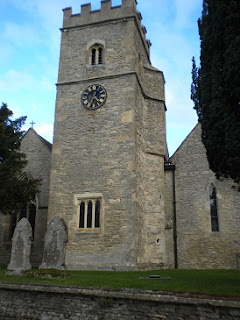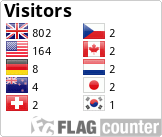Saint Barthomew’s Church, Ducklington


St. Bartholomew was one of the apostles. It is said that he was a missionary in Asia Minor and Armenia where he suffered martyrdom by being flayed alive, after which he was beheaded.
Ducklington is one of the first Saxon parishes to be recorded in Oxfordshire. It is featured in the 958 Charter of King Edgar the Peaceable, granting land to his Minster Eanulf. The name ‘Ducklington’ has been translated as Ducel’s Farm or as ‘The farm of the sons of Docca’.
Following the Norman Conquest, Ducklington was in possession of Robert d’Oily, friend of William I and builder of Oxford Castle and Osney Abbey. The earliest part of the church dates from this time. The present plan of the church was established during the 12th century (apart from the chancel. Which was added a little later). However, changes (particularly to the doors and windows) were made during the 13th century, and a major development of the north aisle was undertaken in the first half of the 14th century. The western tower dates from the 15th century. The bell tower has a ring of six bells: five cast by Henry Bagley of Chacombe in 1708, consisting of a Tenor 32½” diameter in C, a Treble was added in 1889 and a Sanctus Bell 13½” diameter is hung for chiming (by James Keene of Woodstock). The Gothic Revival architect E.G. Bruton restored the building in 1871.The clock is newly installed; the 300 year old mechanism of the former clock is on display.
History of Ducklington
Ducklington is a village and civil parish on the River Windrush 1 mile (1.6 km) south of Witney in West Oxfordshire.
Ducklington is one of the earliest Saxon parishes to be recorded in Oxfordshire. In a charter of AD 958 King Edgar the Peaceful granted at Ducklington to his Minister, Eanulf. The toponym "Ducklington" may originate from "Ducel's Farm" or "the farm of the sons of Docca", but it is locally thought to have originated from the central duck pond, where many ducks and ducklings have lived for centuries. After the Norman Conquest Ducklington was held by Robert D'Oyly, a Norman nobleman who took part in William I's conquest of England. The Dyve family then held the Lordship of Ducklington throughout the 13th and 14th centuries, living there until early in the reign of Edward III.
Today, Ducklington is reknowned, notably for the rare Fritillary flower (mainly of the Snake's Head variety), many of which grow in a specially designated meadow just outside the village. Before the Second World War, many fritillaries had grown on fields all over the Windrush Valley. However, the national drive for food production during the war meant that most meadows were intensively ploughed, the rivers dredged, and consequently the fritillaries were lost. Only the current fritillary field was left coincidentally unploughed. The flowers have survived with help from both locals and farmers. Once a year, (normally in April), the local community celebrates Fritillary Sunday when the field, church and hall are opened so that the public may walk amongst and enjoy the flowers. The celebration has been featured in Country Life magazine.
**************************************
If you would like to add to the Church Micro series yourself then please look here
http://churchmicro.co.uk/
There is also a Church Micro Stats & Information page that can be found at
http://www.15ddv.me.uk/geo/cm/index.html
*************************************
Ducklington is a small but busy village and you will arrive at the village green where there is a pond and a number of ducks and a road that runs through the village. Take care if you have children with you. The co-ordinates for this cache will have taken you a church noticeboard, where the narrow road can be busy at times. You will see that it has a plaque in loving memory of two people. Using the four words on the bottom two lines, replace letters with numbers to find the location of the cache. The cache is not at the church but a can be found a few metres away at N 51° 45.ABC W 001° 28.BDB
You need the following details:
1. A = # letters in 1st word +1
2. B = # letters in 2nd word + letters in 3rd word
3. C = # letters in 3rd word +1
4. D = # letters in 1st word - letters in 3rd word
****FTF**** Goes to 'Stompy&Stampy'
